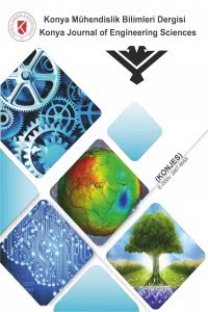Çok katlı betonarme panel yapıların yatay yük altında davranışı: teorik ve deneysel araştırma
Bu çalışmanın konusu, tünel kalıp tekniği ile inşaa edilen çok katlı yapıların deprem yükleri altındaki dayanım ve davranışının araştırılmasıdır. Bu amaçla, tünel kalıp teknolojisi uygulanmış yapıların yatay elemanları olan döşemeler ile düşey elemanları olan perdelerin birleşim bölgelerinden oluşan bir kesit modellenmiştir. Modellenen yapı sistemi, Selçuk Üniversitesi, Mühendislik-Mimarlık Fakültesi, İnşaat Mühendisliği Bölümü Yapı Laboratuarında çelik profillerden imal edilmiş yatay yük çerçevesinde tersinir-tekrarlanır yük altında denenmiştir. Modeller üzerindeki tersinir-tekrarlanır yatay yük uygulaması; perde ve döşeme boyutları sabit olmak üzere, perdelerdeki donatı miktarlarına ait parametreler değiştirilerek 4. kat, 3. kat ve 2. katlardan uygulanmıştır. Betonarme perdelerde yatay ve düşey donatı aralıklarının etkisinin belirlenmesi için TİP A; TİPB ve TİPC olmak üzere üç çeşit model üzerinde deneyler yapılmıştır. Numunelerde kullanılan donatı düzenine göre moment-eğrilik, yük-şekil değiştirme ve perde tabanında meydana gelen yük-deplasman grafikleri hazırlanmıştır. Bu değerler kendi içlerinde ve teorik araştırmadan elde edilen sonuçlarla karşılaştırılmıştır. Ayrıca perde kesitinin, yerleştirilen donatıların kopma anındaki moment kapasiteleri deneysel ve teorik olarak irdelenmiştir. Model perdelere yatay yük uygulaması sırasında meydana gelen çatlaklar incelenerek göçme türleri hakkında görüşler ortaya çıkarılmıştır.
The behavior of multistory reinforced concrete panel buildings under lateral loading: A theoretical and experimental study
The subject of this research is the study of the strength and behavior of multi-story buildings constructed by the tunnel-framework technique subjected to earthquake excitations. For this purpose, a section composed of the connection regions of the structural walls which are the vertical members and the floors which are the lateral members of the buildings constructed by the tunnel-framework technology is modeled. The modeled structural system has been tested under reverse-cyclic loading within a lateral load testing frame assembled from steel profiles at Selcuk University, Engineering-Architecture Faculty, Civil Engineering Department Structures Laboratory. The reversed-cyclic loading are applied on the models at the 4th, 3rd and 2nd floor levels by varying the parameters belonging to the amount of reinforcement and keeping the thickness of shear wall and slab constant. In order to determine the effect of the spacing of vertical reinforcement in reinforced concrete shear walls, experiments have been carried out on three different models namely Type-A; Type-B and Type-C. The diagrams of moment-curvature, load-deformation and load-displacement of the bottom of shear wall are plotted with respect to the reinforcement patterns used in the specimens. These values are compared with each other and with the results obtained from the theoretical study. Moreover, for the shear wall sections, the moment capacities of the embedded reinforcing bars at the time of failure are discussed experimentally and theoretically. By inspecting the cracks of the model shear walls occurred during the application of lateral force, some conclusions have been made about the failure modes.
___
- İlgün, A., (2003), Çok Katlı Betonarme Panel Yapıların Yatay Yük Altında Davranışı:Teorik Ve Deneysel Araştırma, Doktora Tezi, S.Ü. Fen Bilimleri Enstitüsü, Konya.
- Köken, A., (2003) , Tersinir-Tekrarlanır Yatay Yükleme Altındaki Çok Katlı Ve Çok Açıklıklı Dolgu Duvarlı Çelik Çerçevelerin Davranışının Teorik Ve Deneysel Olarak İncelenmesi, Doktora Tezi, S.Ü. Fen Bilimleri Enstitüsü, Konya.
- Cardenas, A.E., Hanson, J.M., Corley, W.G., Hognestad, E., (1973), Design Provisions for Shear Walls, Journal of the American Concrete Institute, 70, 3, 221-230.
- http://www.ecf.utoronto.ca/~bentz/download.htm
- ISSN: 1300-5200
- Yayın Aralığı: Yılda 4 Sayı
- Başlangıç: 2018
- Yayıncı: -
Sayıdaki Diğer Makaleler
Z.M. MUKHTAROVA, I.B. BAKHTİYARLY, D.S. AJDAROVA, F.A. NOVRUZOVA
Alacaatlı-Beytepe köyü (GB Ankara) bölgesinde yüzeyleyen Jura-Kretase yaşlı çökellerin stratigrafisi
Toplu konut inşaat maliyetlerinin yapay sinir ağları ile tahmini
Çok katlı betonarme panel yapıların yatay yük altında davranışı: teorik ve deneysel araştırma
ABDULKERİM İLGÜN, Ergin ATIMTAY
Sanayi yapılarının maliyetinde etkin parametrelerin irdelenmesi
M. Soner TAŞTEKİN, Nail KARA, M. Hakan ARSLAN
Çok katlı betonarme konutlarda kaynak ihtiyacının yapay sinir ağları ile tahmini
Eğitim yapılarında beton, kalıp ve demir maliyetleri ile yapı toplam maliyeti ilişkisi
